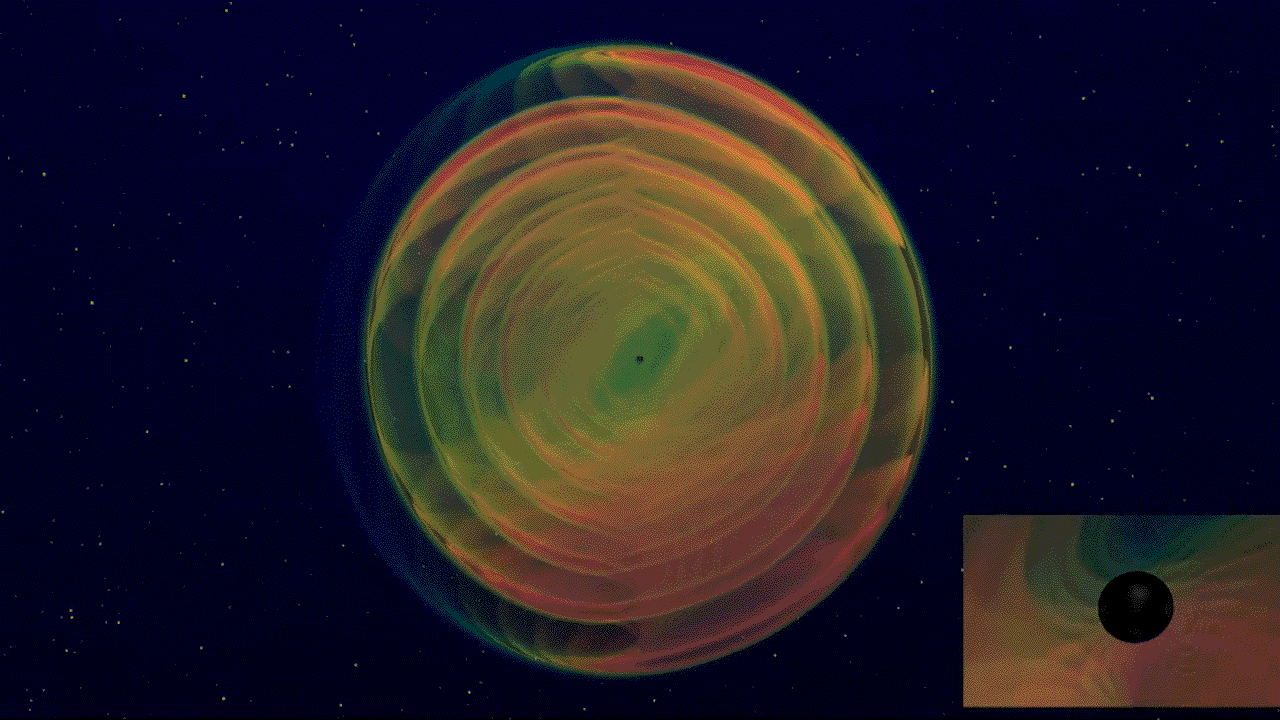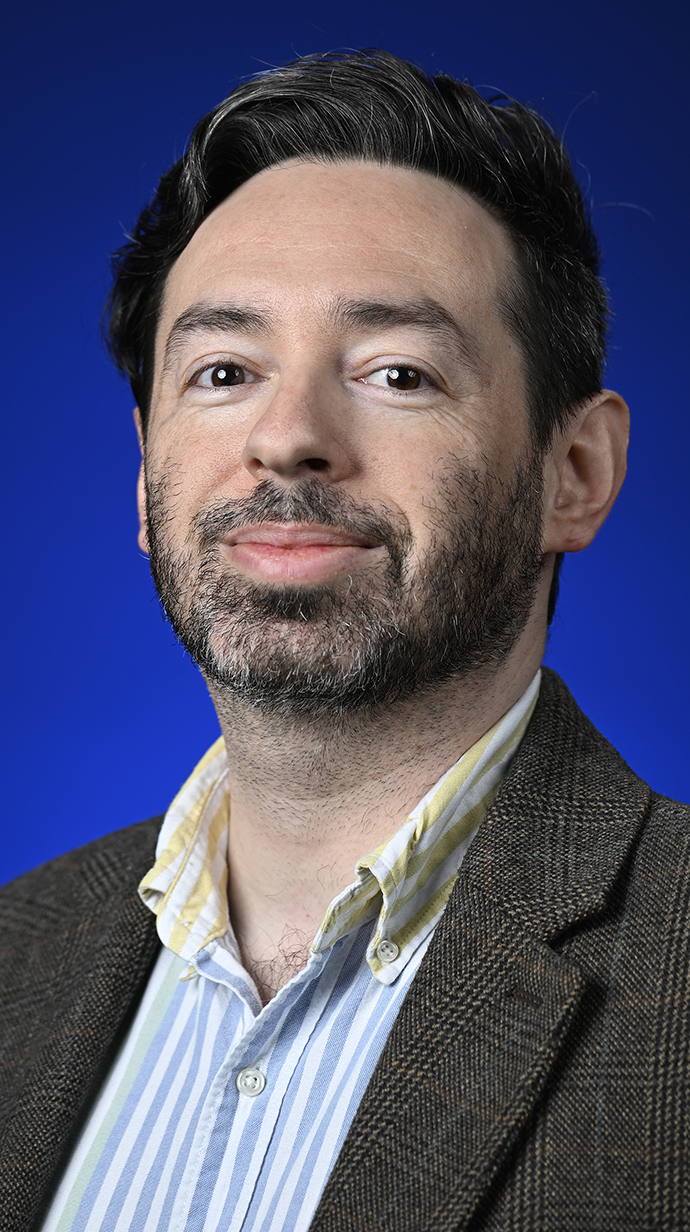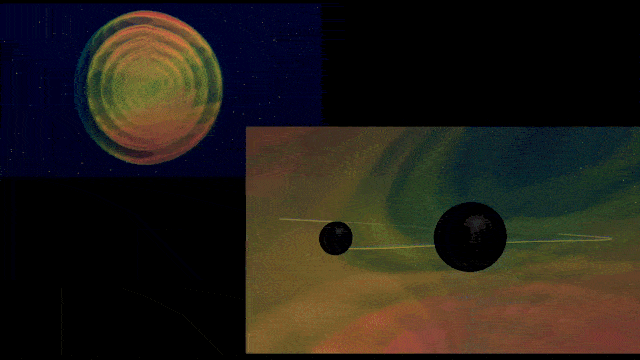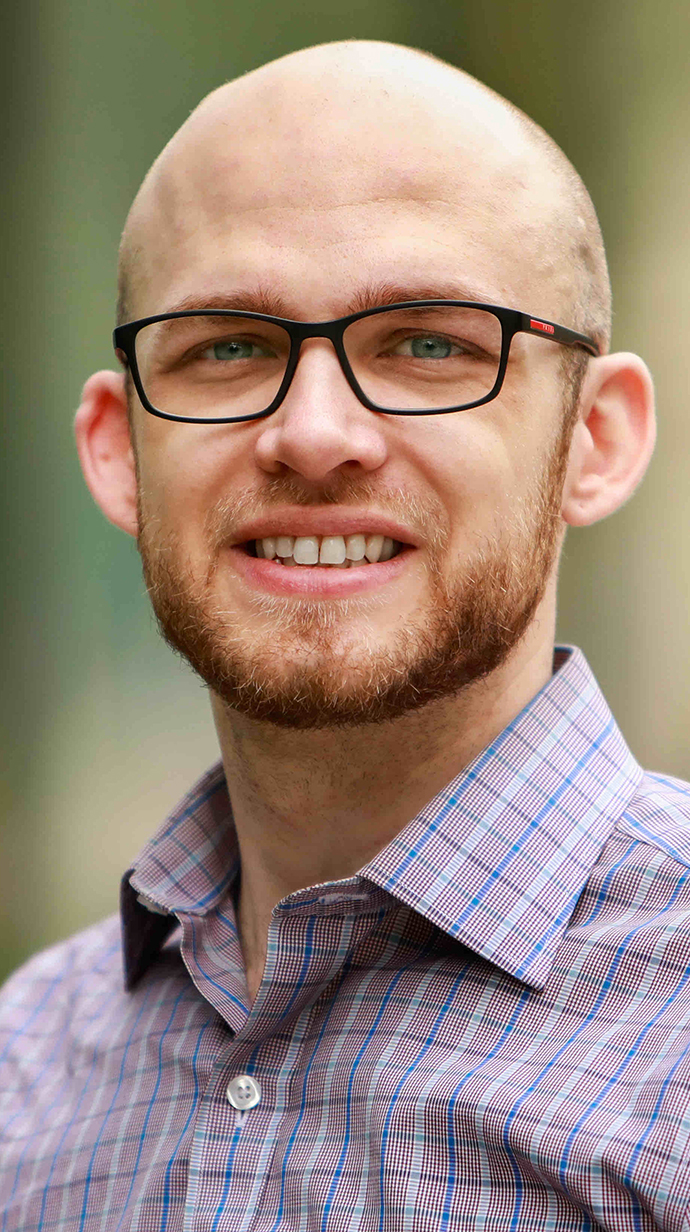New Catalog Reveals Secrets of Black Hole Collisions
New catalog nearly doubles the number of merger simulations

OXFORD, Miss. – They operate in the darkness of space far beyond the reach of telescopes, but new research is helping shed light on what happens when black holes collide with each other.
The Simulating eXtreme Spacetimes Collaboration has released the third catalog of black hole simulations in the journal Classical and Quantum Gravity, nearly doubling the number of black hole collision simulations available to researchers across the globe.
The key to detecting these black hole mergers is gravitational waves, the ripples in space-time created when black holes collide, said Leo Stein, associate professor of physics and astronomy at the University of Mississippi. Stein is among dozens of researchers on the collaboration that includes Cornell University and the California Institute of Technology.

"If you've got two black holes crashing into each other, you cannot see that with a telescope," he said. "It's only gravitational waves that are going to tell you about the details of that merger.
"The only way to understand what gravitational waves are telling us is to match the observations with simulations. That's what this catalog does; it gives us templates to decode what's happening in deep space."
The new catalog includes 3,756 simulations of black hole mergers and the gravitational waves they would produce. Using the simulations, researchers can reconstruct the orbits of black holes before they crash into each other and glean clues about what kind of stars made the black holes before they collided.
"Astronomy is very different from a lot of sciences, because I can't set up a black hole in the lab and observe it," said Nils Deppe, assistant professor of physics at Cornell and co-author of the publication. "We have no say over what the universe gives us.
"So, these simulations are our lab – where I get to tweak the physics and say, 'Oh, this best matches with what we're actually seeing and what the universe is giving us.'"
Because black holes are some of the densest objects in the universe – second only to neutron stars – their collisions are extreme events.
"If you took the entire Earth and compressed it into a black hole, the black hole would be the size of your fist," Deppe said. "But these black holes are huge, and so black hole collisions are the most violent thing we know of in the universe.

A smaller black hole orbits a larger one before colliding and merging with it. The collision creates gravitational waves (upper left) that can be detected only with extremely sensitive instruments such as the Laser Interferometer Gravitational-Wave Observatory. Image by N. Vu, H. Pfeiffer and A. Buonanno/Max Planck Institute for Gravitational Physics, Simulating eXtreme Spacetimes project
"But when they collide, the leftover black hole rings like a bell. Think of when you hit a bell, and it rings until it fades away. That's our gravitational waves."
These waves can distort the space around them, changing the distance between objects by less than one-thousandth the width of a proton. This effect is so small it can only be measured with ultra-sensitive instruments such as the Laser Interferometer Gravitational-Wave Observatory.
Even with those instruments, understanding what gravitational waves have to say about the black holes is difficult without simulations. Because the catalog is available for researchers across the globe, any researcher studying gravitational waves can use the simulations to understand what they are observing.
"What can the waves tell us about the lives of massive stars back in the early universe?" Stein said. "Those are all things that we want to understand.
"The only way to get at those things is to match a prediction with the observation, and that's why we need the supercomputer simulations to say, 'What does the theory tell us and is it correct?'"

Though the effort to create these simulations took thousands of hours and dozens of researchers and students, the work is not done, Deppe said.
Besides trying to decode eccentric or unusual black hole orbits and using gravitational waves to test Albert Einstein's theory of general relativity, the collaboration must prepare for the next generation of gravitational wave-detecting technologies.
"There are newer detectors being planned in the U.S., and Europe is building a space-based detector," Deppe said. "These detectors will be 100 to 1,000 times more accurate than the current ones, and that means our simulations must be 100 to 1,000 more accurate, too."
Understanding black hole collisions may seem like a lofty goal, but humans have been chasing such goals for as long as they have existed, Stein said.
"We humans, in the abstract, believe that we can understand the universe," he said. "The way we understand it is sometimes by measuring things and seeing if they agree with what we predicted.
"I think that makes some of us happy – just the joy of discovery, the joy of understanding."
This material is based on work supported by the National Science Foundation grant nos. PHY-2309211, PHY-2309231, OAC-2209656, PHY-2407742, PHY-2207342, OAC2209655, PHY-2047382, PHY-2309301, DMS-2309609, PHY-2110496, AST-2407454, PHY-2208014 and AST-2219109.
Top: When black holes collide, they create ripples in space-time called gravitational waves. These waves travel across the wide expanses of the universe and, by studying them, researchers can better understand what is happening at the outer reaches of observable space. Image by N. Vu, H. Pfeiffer and A. Buonanno/Max Planck Institute for Gravitational Physics, Simulating eXtreme Spacetimes project
By
Clara Turnage
Campus
Office, Department or Center
Published
October 08, 2025
